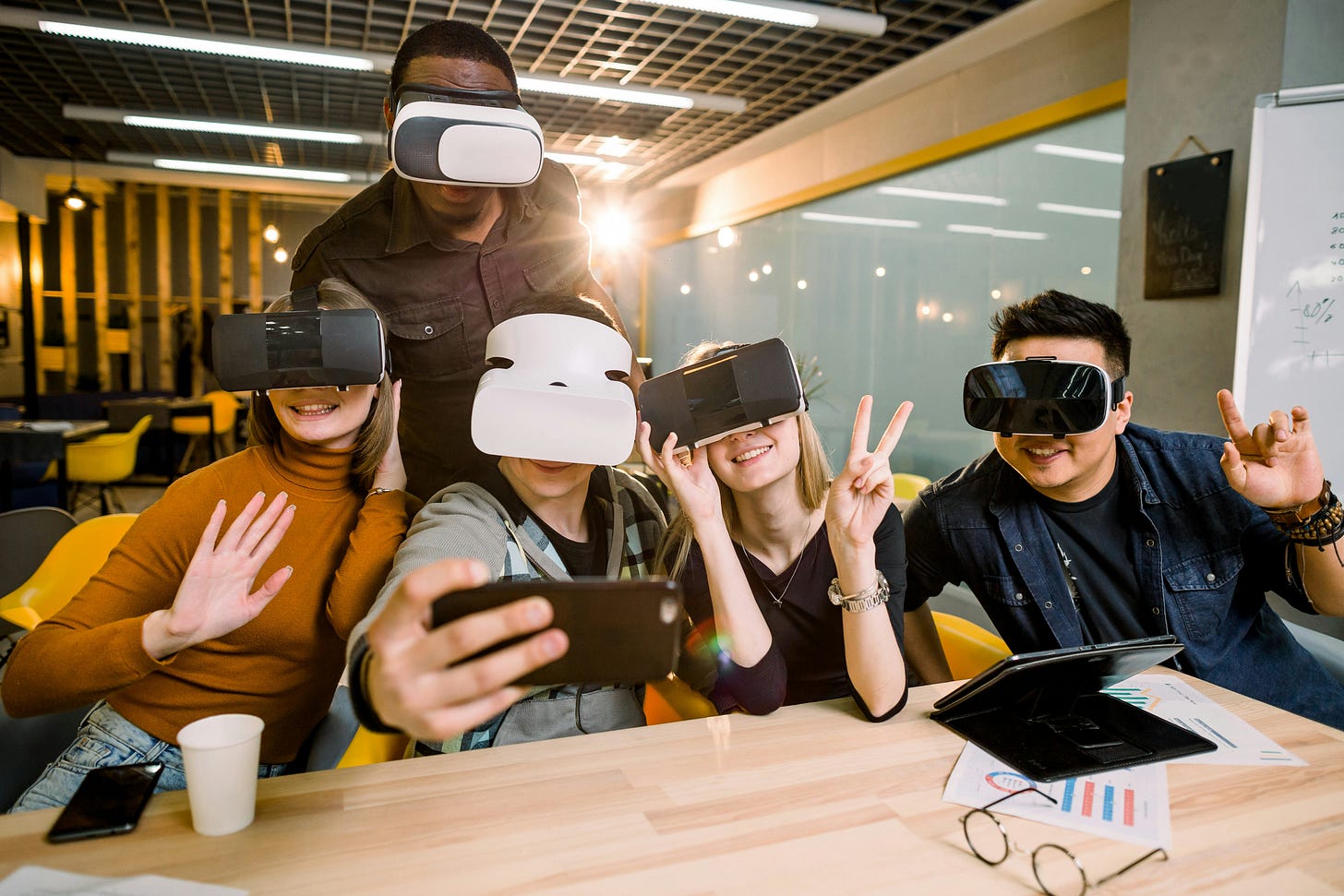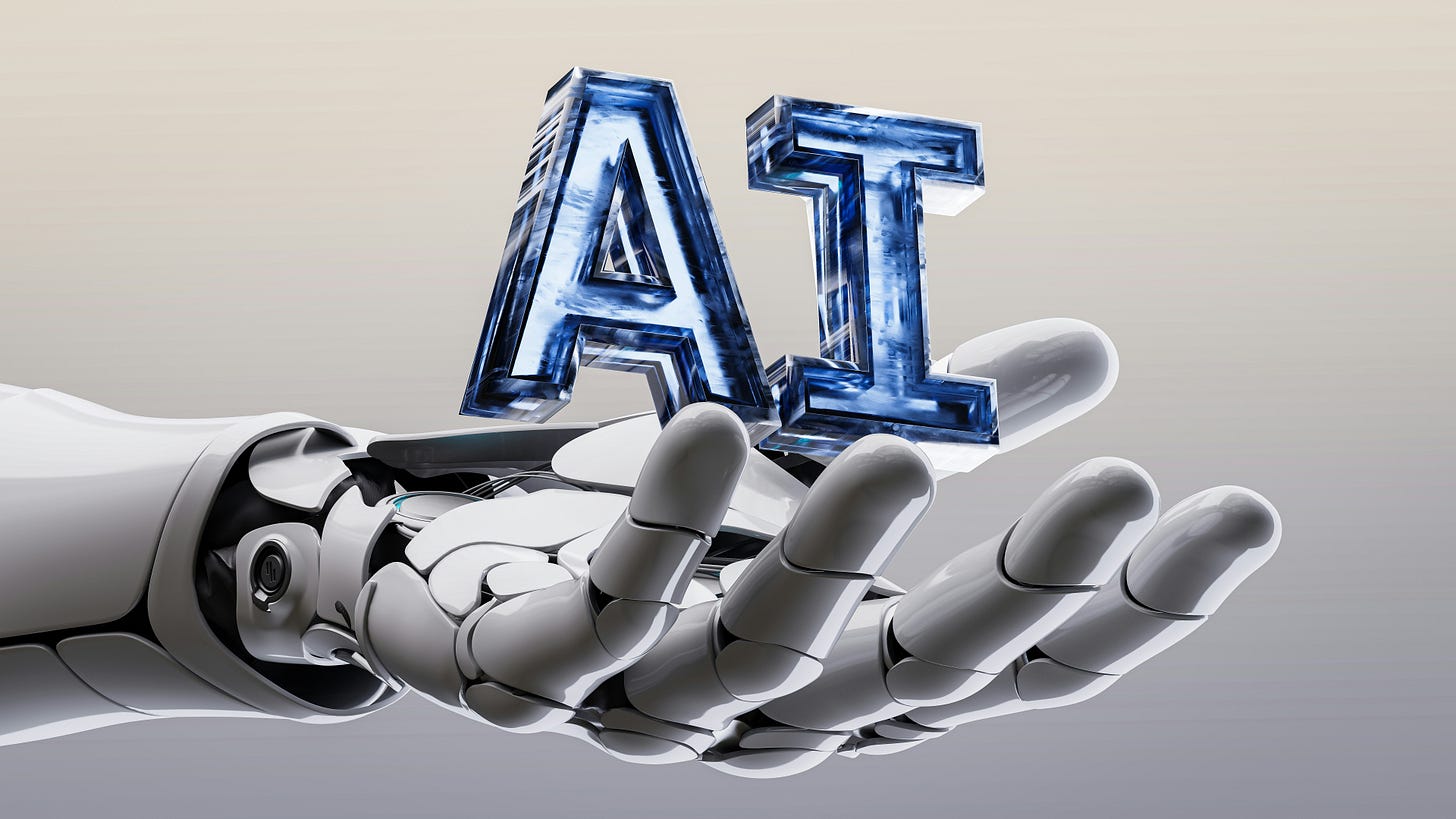Leveling Up With AI
Use "multiplayer mode" to turn AI into a strategic partner and force multiplier
I do not believe technology hype.
How can that be, you ask, with such a long career in (checks notes) … technology?
Don’t get me wrong—I absolutely love technology, and have seen first hand just how transformative it can be. It has changed every single aspect of our lives over the last 30(ish) years.
We sell and shop differently, learn and work differently, interact and communicate differently—we do so many things differently, in both good and bad ways—because of technology.
Things WILL Change … Someday
As much as I love it, I also have a healthy skepticism about technology—especially the “OMG this will instantly and forever change everything” hype around it.
Anyone remember that education-killer, MOOCs? Yeah, me either.
Virtual and augmented reality. Blockchain. Quantum computing. 3D printing. Each was supposed to be a game-changer but none have lived up to their hype … yet.
Even cloud computing—which actually has been transformational to how we build and operate businesses—did not change the world overnight. Or in a year. Or even in a decade.
The first cloud computing provider (who also happens to be my employer), AWS, launched its first service in 2006. Google launched theirs in 2008, Microsoft in 2010, and Oracle didn’t launch until 2016.
And we’re just now—nearly 20 years later—starting to see mainstream adoption of the cloud.
Let that sink in.
AI Everywhere, All the Time
Now, of course, there’s AI. Or generative AI. Or agentic AI. Or whatever the buzzword du jour is—it’s coming for you, your job, your family, your way of life.
If you say so. 🙄
Do I believe AI will change our lives? Eventually, yes. Do I believe it’ll happen immediately? Not. A. F**king. Chance.
So of course when the generative AI hype hit, I did what any skeptic would do—I rolled my eyes and went about my business as usual, sans AI.
And I felt vindicated in my stance. I saw what AI had to offer, and I was not impressed:
Really bad writing
Poor summarizations
Misinterpreted information
Outright hallucinations
Early AI outputs were, umm … not good. And that’s putting it politely.
You know that saying—garbage in, garbage out? In addition to just pure technical immaturity, a lot of AI’s faults can be attributed to missing context and inadequate oversight.
Like most things in life, you get out of it what you put into it.
New Mental Model Required
I’ve come around on AI, but it required me to do two things:
Change the way I think about and do my work
Ignore the hype about how AI can and should be used
AI isn’t a replacement for us and our work.
Contrary to what we’re being told, the value isn’t found in blind use of AI to do anything and everything for us. There may be limited use cases where AI can truly take the wheel, but mostly, this doesn’t work.
It’s not an overlay technology, either.
I’ve seen technology applied as an overlay throughout my career—the addition of projectors in classrooms, video conferencing in businesses. Sure, we’re “using” technology but it’s really just an added (and mostly superficial) layer—it isn’t being used to fundamentally change how we teach, learn, or work.
Using AI effectively requires an entirely new way of thinking and operating.
It’s like shifting from being an only child to an identical twin. Instead of putting our headphones on and working alone we’re suddenly part of a duo, pair programming to complete our work. Or, as my wife puts it, operating in multiplayer mode.
By teaming with AI—embedding it into your work process, from ideation to execution—you create a more efficient and effective version of you.
How I Use AI
Here are two very specific and tactical ways I’ve started to incorporate AI into my work, as well as the most valuable use case of all—AI as a thought partner.
Photographer
Professional headshots are fantastic, but oy, what a hassle—hair, makeup, outfits, coordinating and doing the session. It’s exhausting. Early AI headshots were okay—my 2023 version sort of looked like me?—but I’m pleasantly surprised with the photo Instaheadshots recently generated of me, at a fraction of the time and cost of a pro.



Scripter
I wanted a secure way to provide SGNR subscribers with downloadable content, like this PDF guide to go along with the What’s the Problem? article. After exploring options with Claude, I settled on Google Apps Script as the most viable solution.
Except … I’d never used Google Apps Script before. Never even heard of it. And my scripting capabilities? Well, they’re pretty much non-existent.
So I asked Claude to write the script and provide me with step-by-step instructions for setting it up. About 15 minutes later—after some testing and edits prompted by me asking “is it supposed to do this?”—I had a working automation using a tool I had never seen or used before. 🤯
Do I believe AI will change our lives? Eventually, yes. Do I believe it’ll happen immediately? Not. A. F**king. Chance.
Although Claude did a lot of the heavy lifting, the process required my direction, oversight, and continued inquiry:
The first set of recommendations included options that did not exist
The script appeared to execute, but the log didn’t look right to me—so I probed deeper
The solution worked for future subscribers, but I needed an additional solution to give existing subscribers access
AI helped me achieve something it would have taken me days or even weeks to figure out on my own—but it did not do it alone.
Which is exactly why AI's real superpower isn't replacement, it's partnership.
Your Thought Partner
This is by far the most significant way to use AI every day—as a force multiplier for yourself.
It takes time, though, and a mental model shift away from using AI as a search engine and toward using it as an always-on partner to:
synthesize information or data
brainstorm and bounce ideas off of
help you look around corners
expand or challenge your thinking
augment your research
identify or surface trends you may not have seen
turn strategy into an implementation plan
provide step-by-step instructions
outline documents, write first drafts, review and edit more complete versions
shortcut administrative tasks—if you haven’t tried “docs-to-decks” yet, you’re welcome 😉
The key is to start embedding AI into virtually everything you do and continuously iterate with it—to have a constant, ongoing conversation with your AI counterpart.
It still requires your strategy and critical thinking—in fact, this is essential. But coupled with your AI thought partner, you're faster. More efficient. More effective.
You’re you—only better.
Bonus Read
As we lean into more and more technology in our work, it’s more important than ever to not forget our humanity as well.
More AI Resources
There’s a lot being written about AI these days. Here are a couple of articles I’ve found thoughtful in identifying how and where AI fits into our work:
How not to lose your job to AI: The skills AI will make more valuable (and how to learn them), 80,000 Hours
Jobs at Risk, Jobs That Rise: What AI Is Really Coming For, Dispatches from an Internet Pioneer
PS: If you haven’t shared your thoughts in the Reader Survey yet, there’s still time! Please take this quick survey to help shape the future of my blog. Thank you! 🙏







